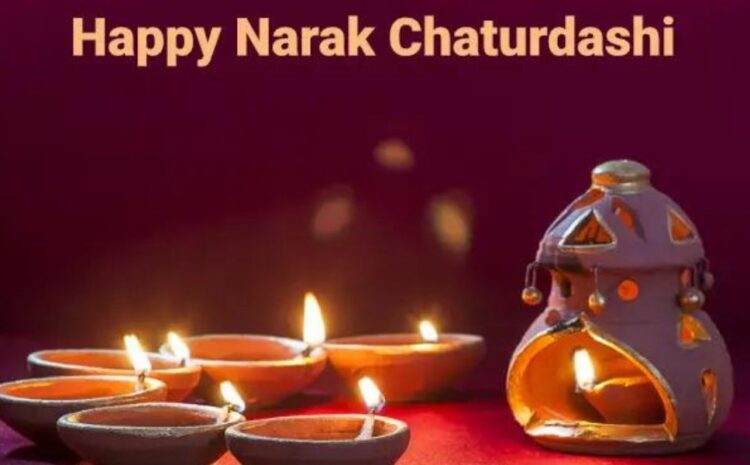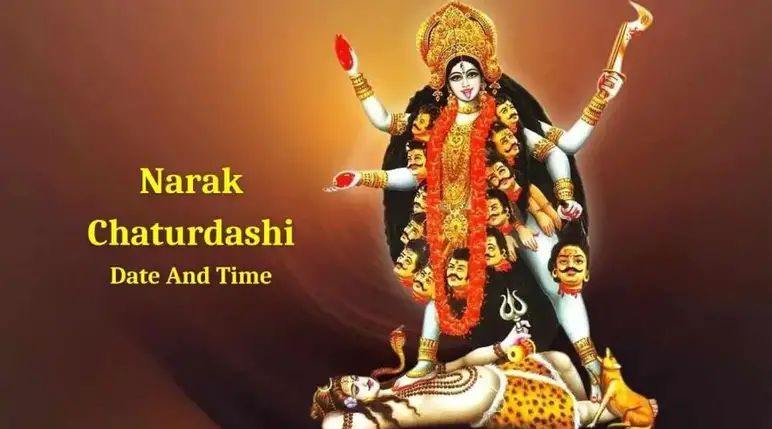Narak Chaturdashi
Narak Chaturdashi
Narak Chaturdashi, also known as Narak Chaudas, Roop Chaudas, or Kali Chaudas, is a revered festival celebrated during the Kartik month on the 14th day of the waning moon. Rooted in ancient Indian mythology, this occasion is dedicated to honoring the Lord of Death, Yamraj, with profound devotion. Falling on the day before Diwali, it is affectionately referred to as Choti Diwali.
Narak Chaturdashi sees people lighting diyas in their homes after dusk, symbolizing their reverence for the god of death and their desire for protection from untimely demise and improved health. An age-old tradition involves applying sesame oil to the body and bathing with water infused with Apamarga leaves before dawn, fostering fearlessness and paving the way to spiritual elevation.
Narak Chaturdashi follows a time-honored tradition, observed on the 14th day of the waning moon during the Krishna paksha of the Kartik month. The significance of this festival lies in specific timeframes and rituals:
- Precise Timing: Narak Chaturdashi is celebrated during the Kartik Krishna paksha, either just before the moonrise or during the pre-dawn period, lasting for 1 hour and 36 minutes. The pre-dawn time is typically considered more auspicious.
- Determining the Date: If both Narak Chaturdashi dates coincide with either moonrise or pre-dawn, the celebration takes place on the first day. If not, it still commences on the first day.
- Oil Application Tradition: An age-old tradition entails applying oil to the body before either moonrise or pre-dawn and worshiping Yamraj, the god of death.
Narak Chaturdashi Puja Vidhi
Performing the Narak Chaturdashi puja involves a series of rituals:
- Auspicious Bath: Taking a bath before sunrise is considered highly auspicious. During the bath, applying sesame oil to the body is essential. Afterward, circulate Apamarga leaves around your head three times.
- Charging Ritual: On Ahoi Ashtami, during the Kartik month’s dark lunar fortnight, fill a vessel to the brim with water. On Narak Chaturdashi, mix this water with your bathing water. It is believed that this ritual dispels fear of damnation.
- Prayer to Yamraj: After bathing, offer sincere prayers to Yamraj, facing southward with both hands joined. This act serves as atonement for past sins.
- Diya Lighting: Light an oil lamp outside your main door to honor Lord Yamraj.
- Evening Worship: In the evening, worship all the deities before lighting an oiled diya. Place these diyas on both sides of your home or workplace’s entrance, symbolizing an invitation to Goddess Lakshmi, the deity of wealth, to bring abundance.
- Choti Diwali Significance: Narak Chaturdashi, also known as Choti Diwali, signifies the beautification of one’s appearance (roop) by illuminating diyas in the evening, dispelling darkness from our lives.
- Nisheeth Kaal Tradition: During Nisheeth kaal, it is advisable to remove useless items from your home, symbolizing the removal of poverty. This prepares the house for the arrival of Goddess Lakshmi, who is believed to bring prosperity and wealth on Diwali, the day following Narak Chaturdashi.
Legendary Tales and Significance
Narak Chaturdashi is rich in mythological significance, with the lighting of diyas playing a central role:
- Defeat of Narakasura: The festival commemorates the defeat of the demon Narakasura. This malevolent entity had terrorized saints and priests, even holding 16 thousand gods’ wives hostage. Seeking justice, saints and priests approached Lord Krishna. With divine intervention, Narakasura met his end on Narak Chaturdashi, securing the release of the hostages. In celebration, diyas are lit on Narak Chaturdashi and Diwali to symbolize the victory of light over darkness.
- Datyaraj Bali’s Boon: Another legend involves Lord Krishna taking the form of a dwarf and, in three steps, covering the entire kingdom of King Datyaraj Bali between the 13th day and the full moon. In gratitude, King Bali granted his kingdom to Lord Krishna. As a boon, King Bali requested that his kingdom remains prosperous during the three days between the 13th day and the full moon, ensuring wealth and prosperity for Diwali celebrants. Additionally, lighting a diya on Chaturdashi ensures that one’s ancestors are spared from Yamraj’s realm, signifying freedom from the clutches of hellish domains.
These tales underscore the importance of Narak Chaturdashi, with its customs and rituals ensuring the triumph of light, prosperity, and the victory of good over evil.
Connect with an Astrologer for more personalised detailed predictions. First FREE CALL.
Also Read: Celebrate Bhai Dooj 2023 : Faith and Rituals












Write a Comment